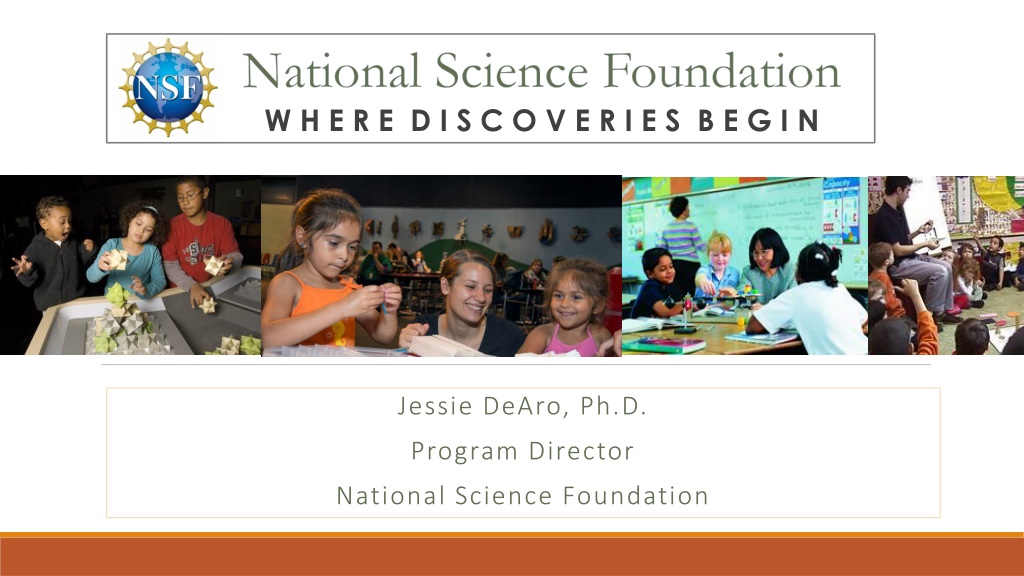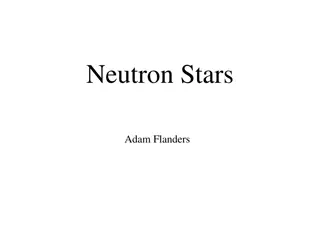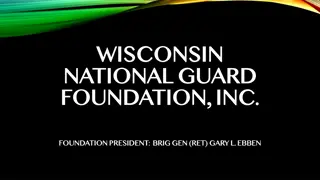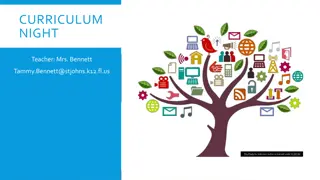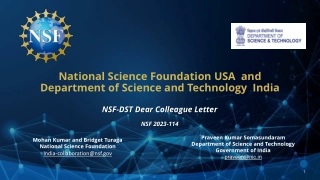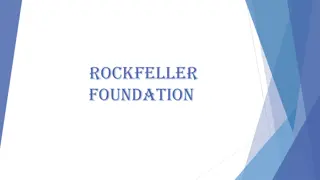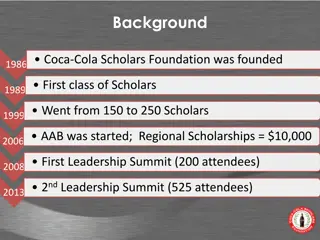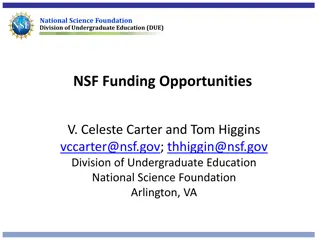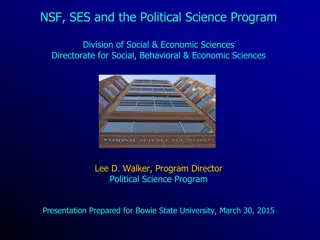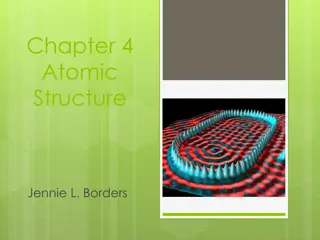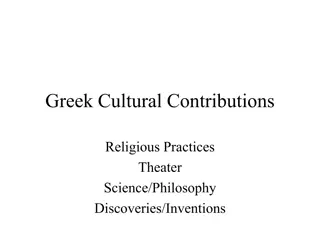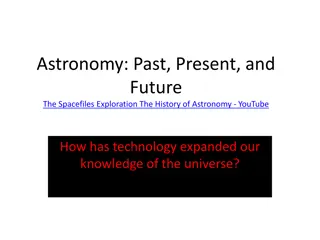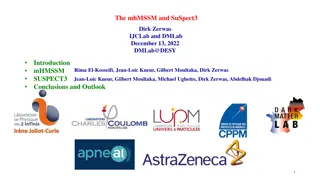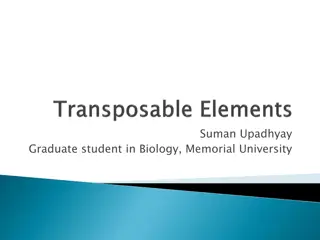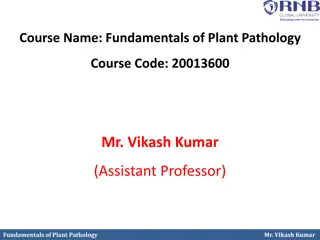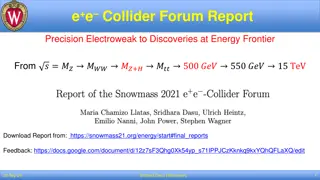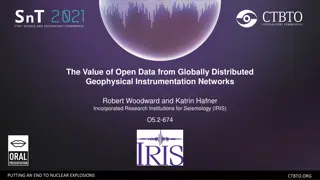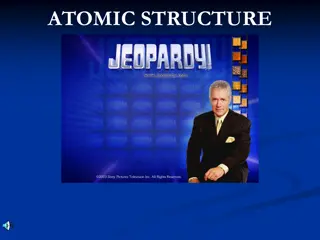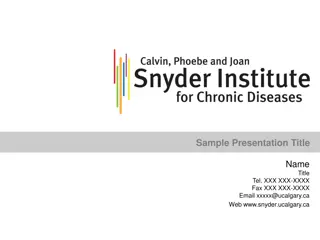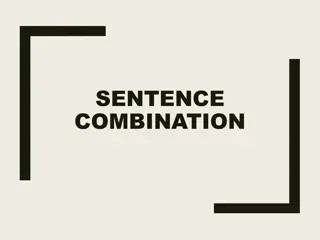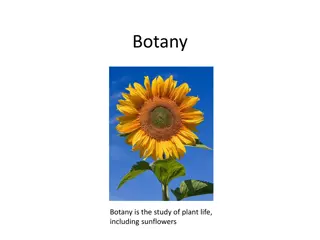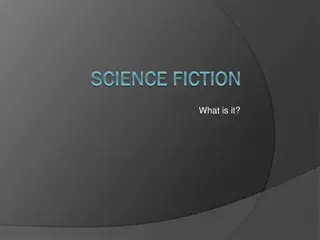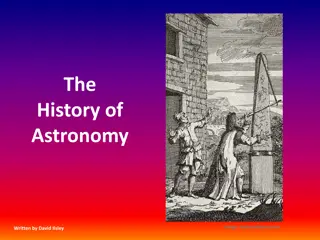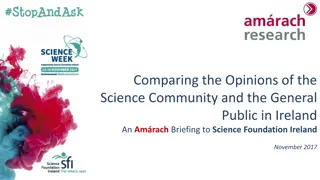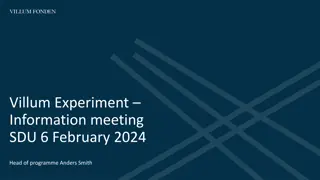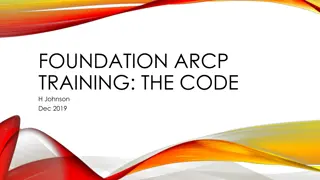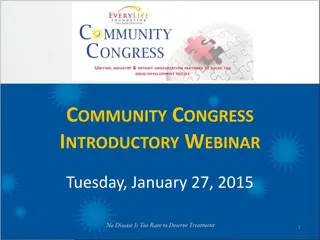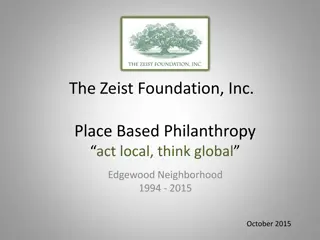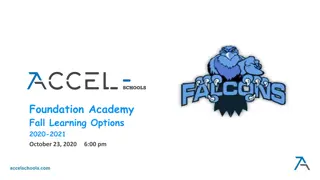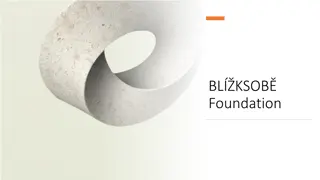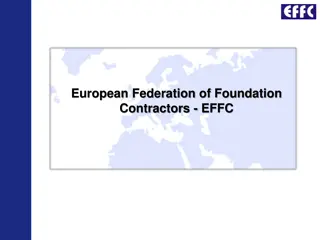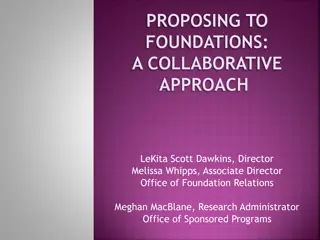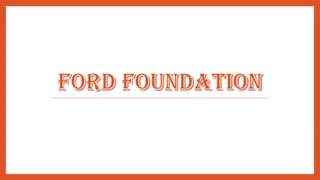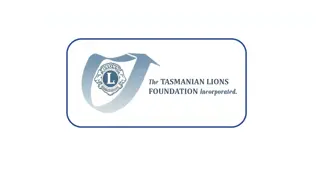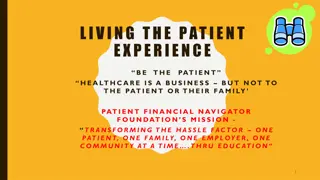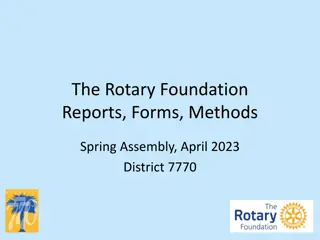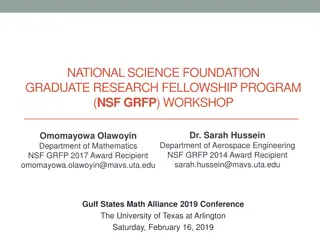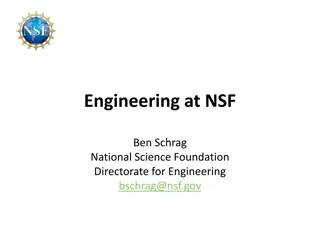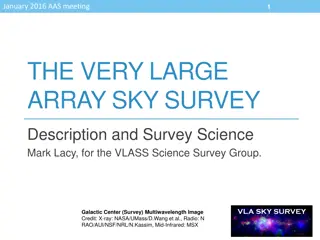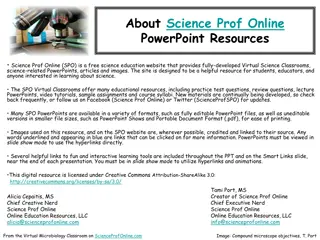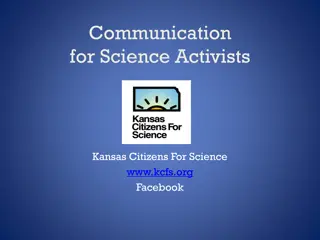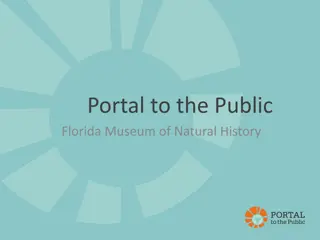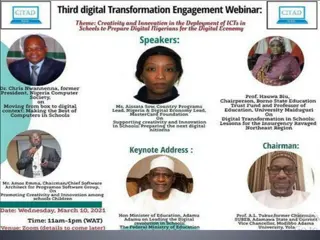National Science Foundation - Where Discoveries Begin
The National Science Foundation (NSF) is dedicated to promoting science progress, advancing national health, prosperity, and defense. Under the direction of Program Director Jessie DeAro, Ph.D., NSF offers various funding opportunities and resources for researchers and grantees to support their work. The agency's mission is to foster innovation and secure the future through scientific discoveries. Learn about NSF's Proposal and Award Policies & Procedures Guide (PAPPG) and different types of funding opportunities available. Explore the diverse offices and initiatives within NSF that contribute to the advancement of science and research.
Download Presentation

Please find below an Image/Link to download the presentation.
The content on the website is provided AS IS for your information and personal use only. It may not be sold, licensed, or shared on other websites without obtaining consent from the author. Download presentation by click this link. If you encounter any issues during the download, it is possible that the publisher has removed the file from their server.
E N D
Presentation Transcript
National Science Foundation W H E R E D I S C O V E R I E S B E G I N Jessie DeAro, Ph.D. Program Director National Science Foundation
Mission: To promote the progress of science; to advance the national health, prosperity, and welfare; to secure the national defense. Office of Diversity Inclusion Office of Diversity & Inclusion National Science Board (NSB) Director and Deputy Director Office of the General Counsel Office of the General Counsel National Science Board (NSB) Director and Deputy Director Office of Integrative Activities Office of Integrative Activities Office of International Science Engineering Office of the Inspector General (OIG) Office of International Science & Engineering Office of the Inspector General (OIG) Office of Legislative Public Affairs Office of Legislative & Public Affairs Biological Sciences (BIO) Computer Information Science Engineering (CISE) Engineering (ENG) Geosciences (GEO) Mathematical Physical Sciences (MPS) Computer & Information Science & Engineering (CISE) Mathematical & Physical Sciences (MPS) Biological Sciences (BIO) Engineering (ENG) Geosciences (GEO) Administrative Offices Social, Behavioral Economic Sciences (SBE) Education Human Resources (EHR) Budget, Finance Award Management (BFA) Information Resource Management (IRM) Administrative Offices Social, Behavioral & Economic Sciences (SBE) Education & Human Resources (EHR) Budget, Finance & Award Management (BFA) Information & Resource Management (IRM) Offices with funding opportunities Offices with funding opportunities
Proposal & Award Policies & Procedures Guide PAPPG: contains documents relating to NSF's proposal and award process. Grant Proposal Guide (GPG) Award Administration Guide (AAG) It is used by potential grantees, current grantees, and NSF staff. Make sure you have the most up to date version. NSF Policy office web site: https://www.nsf.gov/bfa/dias/policy/
Types of Funding Opportunities Types of Funding Opportunities Program Description Published only on the NSF website. Proposals must follow GPG (Grant Proposal Guide) instructions. Program Announcement Published NSF document describing the program. Proposals must follow GPG instructions. Program Solicitation Published document with additional restrictions and/or requirements. Proposals must follow both the solicitation and the GPG instructions Dear Colleague Letter Notifications of opportunities or special competitions for supplements to existing NSF awards.
NSF Merit Review Criteria NSF Merit Review Criteria All proposals submitted to NSF must address the following merit review criteria: The Intellectual Merit criterion encompasses the potential to advance knowledge; and The Broader Impacts criterion encompasses the potential to benefit society and contribute to the achievement of specific, desired societal outcomes.
Finding grant programs that fit your project Finding grant programs that fit your project STEM disciplines supported by NSF Not clinical science faculty or allied health Subscribe to National Science Foundation Email Choose and change your topics at any time Program announcements and solicitations no less than 90 days before target date/deadline Watch for Dear Colleague Letters in areas of interest https://service.govdelivery.com/accounts/USNSF/subscriber/new?topic_id=USNSF_25 Review the program solicitation and NSF Grant Proposal Guide for official information on proposal preparation, eligibility, etc.
Advance Technology Education (ATE) Advance Technology Education (ATE) Education of technicians for the high-technology fields Partnership between academic institutions and industry The ATE program supports curriculum development professional development of college faculty and secondary school teachers career pathways to two-year colleges from secondary schools and two-year colleges to four-year institutions - including prospective K-12 STEM teachers that focus on technological education other activities The program invites research proposals that advance the knowledge base related to technician education. ATE Projects Award size/year: $25K to 300K Maximum duration : 3 years Planning Grants Maximum award size: $70K Maximum duration : 2 years Research on Technician Education Award size: $150K-800K Duration: 2-3 years
Scholarships in STEM (S Scholarships in STEM (S- -STEM) STEM) To improve the STEM workforce by increasing # of students who graduate with STEM degrees # of students entering the STEM workforce Provides Scholarships for Academically Talented Low-income students with demonstrated financial need Scope of projects At least 60% of the funds must be used for scholarships Up to 40% of funds may be used for other things support structures, research, recruitment, etc. Track 1 Inst. Capacity Maximum award size: $650K Maximum duration : 5 years Track 2 Design & Dev. Single Inst. Maximum award size: $1M Maximum duration : 5 years Track 3 Design & Dev. Consortium Maximum award size: $5M Maximum duration: 5 years
HRD Programs HRD Programs LSAMP Focus on the graduation of well-prepared, highly-qualified students from underrepresented groups who pursue graduate studies or careers in STEM Alliances of institutions that implement comprehensive, evidence-based, and innovative strategies https://www.nsf.gov/funding/pgm_summ.jsp?pims_id=13646&org=HRD&from=home ADVANCE Focus on gender equity in STEM academic workforce Organizational and systemic strategies barriers that impede the full participation and advancement of all women faculty in academic institutions. Organizational barriers that inhibit equity may exist in policy, practice, culture, and organizational climate. www.NSF.gov/ADVANCE
NSF INCLUDES NSF INCLUDES Projects to create networks among organizations whose goals include developing talent from all sectors of society to build the STEM workforce. NSF INCLUDES Design and Development Launch Pilots: Projects to explore the feasibility of bold, innovative ways for solving a broadening participation challenge in STEM. $300K for two years Preliminary proposal deadline past for 2017 look for next competition NSF INCLUDES Alliances: Alliances of Design and Development Launch Pilots, programs, people, organizations, technologies, and institutions to catalyze broadening participation investments Funding levels and duration will be articulated in next INCLUDES solicitation Email inquiries to nsfincludes@nsf.gov
Research in Undergraduate Institutions (RUI) and Research Research in Undergraduate Institutions (RUI) and Research Opportunity Awards (ROA) Opportunity Awards (ROA) Solicitation NSF 14-079 http://www.nsf.gov/pubs/2014/nsf14579/nsf14579.htm?WT.mc_id=USNSF_25&WT.mc_ev=click RUI support for one faculty researcher or group of faculty to do research and integrate into education at your institution. The RUI proposal is submitted by you. Recommend contacting the NSF program officer in your research area to ask: If it is a good time to get it reviewed or should you wait until later? Do they still have funds? What is a reasonable amount of funds to request? Can you include equipment and supplies? ROA support for faculty to do research someplace that has NSF funding The NSF PI will ask for the ROA funds Can be built into new proposals or supplement existing NSF awards Points of contact for RUI and ROA: http://www.nsf.gov/crssprgm/rui_roa/contacts.jsp
Improving Undergraduate STEM Education Improving Undergraduate STEM Education (IUSE) (IUSE) IUSE Program Goals: increasing student retention in STEM; preparing students to participate in science for tomorrow; and improving students' STEM learning outcomes. IUSE has two tracks with two tiers each [Exploration and Design and Development and Implementation] (1) Engaged Student Learning (2) Institutional and Community Transformation. IUSE: EHR funding opportunity is offered in alignment with the NSF-wide undergraduate STEM education initiative, Improving Undergraduate STEM Education (NSF-IUSE) described in the solicitation. https://www.nsf.gov/funding/pgm_summ.jsp?pims_id=505082
EHR Core Research (ECR) EHR Core Research (ECR) We invite researchers to identify and conduct research on questions or issues in order to advance the improvement of STEM learning in general, or to address specific challenges of great importance. Three levels of funding based on the maturity of the proposed work and the size and scope of the empirical effort: ECR Level I Research Maximum award size: $500K Maximum duration: 3 years Maximum duration: 3 years ECR Level II Research Maximum award size: $1.5M ECR Level III Research Maximum award size: $2.5M Maximum duration: 5 years ECR projects can include the: Collection of new data and/or secondary analyses of databases Development of innovative research methods, metrics, and conceptual models Implementation of educational or other interventions that are necessary to answer the research questions http://www.nsf.gov/pubs/2013/nsf13555/nsf13555.htm
Common Guidelines for Education Research and Common Guidelines for Education Research and Development Development A report from the Institute of Education Sciences at the U.S. Department of Education and the National Science Foundation, August 2013 Recommended reading for anyone proposing education research to NSF Describes six research types: Foundational early-stage or exploratory design and development efficacy effectiveness scale-up Partner with colleagues in social and behavioral sciences to: Enhance the design of the education research components of your project at the proposal stage Act as a co-PI with needed expertise to the project when needed http://www.nsf.gov/publications/pub_summ.jsp?ods_key=nsf13126
NSF Research Experiences for NSF Research Experiences for Undergraduate Students (REU) Undergraduate Students (REU) Search for an REU site by discipline/research area: http://www.nsf.gov/crssprgm/reu/reu_search.cfm Listed by institution and title of research Contact the REU site for application information (not the NSF) REU sites have to recruit half of their summer students from other institutions Faculty with a NSF research grant may be able to get supplemental funds to support an undergraduate student: They should contact their NSF program officer before submitting the supplement
NSF Graduate Research Fellowship NSF Graduate Research Fellowship NSF GRF Solicitation and links: http://www.nsf.gov/grfp/ GRFP Website: www.nsfgrfp.org Online Application, User Guides, Official Announcements: http://www.fastlane.nsf.gov/grfp/
Early Academic Research Career Programs Early Academic Research Career Programs NSF Faculty Early Career Development (CAREER) Support for junior faculty who exemplify the role of teacher-scholars through outstanding research, excellent education and the integration of education and research http://www.nsf.gov/funding/pgm_summ.jsp?pims_id=503214 NIH Mentored Career Development Awards (K awards) Different types of awards depending on type of research http://www.nigms.nih.gov/Training/CareerDev/default.htm
Policy Opportunities for Faculty in STEM Policy Opportunities for Faculty in STEM Visiting Program Officer at the National Science Foundation http://www.nsf.gov/careers/rotator/ American Association for the Advancement of Science (AAAS) Science & Technology Policy Fellowships http://fellowships.aaas.org For those who have already earned a Ph.D. Up to two-year policy experience in the Federal government
Useful Links on NSF Proposal Development Useful Links on NSF Proposal Development NSF: www.nsf.gov Guide to Programs: www.nsf.gov/funding/browse_all_funding.jsp Award Information: www.nsf.gov/awardsearch FastLane: www.fastlane.nsf.gov Broader Impacts: www.nsf.gov/pubs/gpg/broaderimpacts.pdf Data Management Plan: www.nsf.gov/bfa/dias/policy/dmp.jsp Funding Opportunities: www.nsf.gov/funding 19
Proposal & Award Policies & Procedures Guide PAPPG: contains documents relating to NSF's proposal and award process. Grant Proposal Guide (GPG) Award Administration Guide (AAG) It is used by potential grantees, current grantees, and NSF staff. Make sure you have the most up to date version. NSF Policy office web site: https://www.nsf.gov/bfa/dias/policy/
National Science Foundation W H E R E D I S C O V E R I E S B E G I N Jessie DeAro, Ph.D. Program Director National Science Foundation
